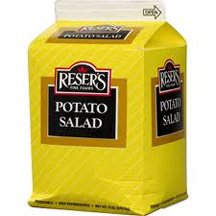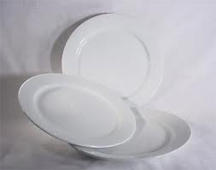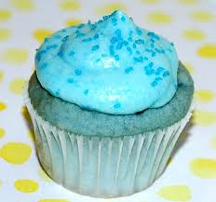To Eat, or Not to Eat
(and HOW MUCH?)
That is the Question!
By Alice Osborne
While researching the issue, WHY DO WE OVEREAT?, I ran across information in a scientific journal, Annual Reviews, July 2004, which reported two things:
1) We Do This Unknowingly and
2) Environmental Factors play a large role in the propensity to overeat.
 Lighting; room temperature; socializing; economy-sized food packaging; plate shape, size, and color; perception of what a “normal” serving of food is; food variety; and food color are only a few of the environmental factors that can influence the amount of food we eat, far more than most people realize. Medical science says we are a nation of heavy overeaters and we’ve been lured into this trend.
Lighting; room temperature; socializing; economy-sized food packaging; plate shape, size, and color; perception of what a “normal” serving of food is; food variety; and food color are only a few of the environmental factors that can influence the amount of food we eat, far more than most people realize. Medical science says we are a nation of heavy overeaters and we’ve been lured into this trend.
 For instance, regarding the issue of straying from “normal” portion sizes, researchers say we can lay at lot of blame to restaurants and fast food places. As a way to attract customers, they have increased portion sizes, they offer “bottomless” drinks, they entice us with “all you can eat” menus, and they tempt us with “add-ons” (for just $2.00 more I could add a 6 oz. steak to my salmon entrée at the Texas Roadhouse the other night). And remember, Americans like to “get their money’s worth,” by golly! Add that mentality to the massive amounts of food served enough of the time, and we now have distorted perceptions as to what constitutes a “normal” meal size.
For instance, regarding the issue of straying from “normal” portion sizes, researchers say we can lay at lot of blame to restaurants and fast food places. As a way to attract customers, they have increased portion sizes, they offer “bottomless” drinks, they entice us with “all you can eat” menus, and they tempt us with “add-ons” (for just $2.00 more I could add a 6 oz. steak to my salmon entrée at the Texas Roadhouse the other night). And remember, Americans like to “get their money’s worth,” by golly! Add that mentality to the massive amounts of food served enough of the time, and we now have distorted perceptions as to what constitutes a “normal” meal size.
 Then there’s the fact that dinnerware size has increased as well. Small servings look lost on these huge dinner plates — the plates look almost empty. So what do we do? We add more food because we have no clue what “normal” is anymore. The size of a “normal” serving of protein, for example, is 2 ounces — about the size of a deck of cards. Weight-loss managers tell us that other normal and healthy serving sizes are about ½ to ¾ cup of this or that (cooked rice, steamed veggies, etc.). This said, it’s easy to see how these amounts seem miniscule when sitting on a surface the size of Lake Michigan. Of course we’re gonna add more food, otherwise it looks like we’re on a starvation diet or something.
Then there’s the fact that dinnerware size has increased as well. Small servings look lost on these huge dinner plates — the plates look almost empty. So what do we do? We add more food because we have no clue what “normal” is anymore. The size of a “normal” serving of protein, for example, is 2 ounces — about the size of a deck of cards. Weight-loss managers tell us that other normal and healthy serving sizes are about ½ to ¾ cup of this or that (cooked rice, steamed veggies, etc.). This said, it’s easy to see how these amounts seem miniscule when sitting on a surface the size of Lake Michigan. Of course we’re gonna add more food, otherwise it looks like we’re on a starvation diet or something.
 And since we eat with our eyes before we take a single bite, let’s factor in food color. From one of my favorite websites, Care2, I learned how color affects our appetite: According to color professor J.L. Morton, when our earliest ancestors were foraging for food, blue, purple and black were “color warning signs” of potentially lethal food. Food researchers agree–when humans searched for food, they learned to avoid toxic or spoiled objects, which were often blue, black, or purple (berries, eggplant, etc, aside).
And since we eat with our eyes before we take a single bite, let’s factor in food color. From one of my favorite websites, Care2, I learned how color affects our appetite: According to color professor J.L. Morton, when our earliest ancestors were foraging for food, blue, purple and black were “color warning signs” of potentially lethal food. Food researchers agree–when humans searched for food, they learned to avoid toxic or spoiled objects, which were often blue, black, or purple (berries, eggplant, etc, aside).
 A study that consisted of serving people food dyed blue showed that folks lose their appetite over blue food. I have to agree — I find blue food too creepy. I always assumed it was because of the dye – I guess there’s more to it.
A study that consisted of serving people food dyed blue showed that folks lose their appetite over blue food. I have to agree — I find blue food too creepy. I always assumed it was because of the dye – I guess there’s more to it.
We can be sure food processing researchers know what it’s all about, and exactly what colors suppress the appetite and which ones excite it. And blue constantly wins the least-appetizing color award. Gary Blumenthal from International Food Strategies reports that, “Color and the appeal of various foods is closely related. Just the sight of food fires neurons in the hypothalamus.” Subjects presented food to eat in the dark reported a critically missing element for enjoying any cuisine: the appearance of food — they wanted to SEE it.
 While blue is considered an appetite - suppressing color, researchers say warm colors stimulate the appetite. According to the Rohm and Haas Paint Quality Institute, red is powerful—it increases blood pressure and heart rate. It often produces feelings of intimacy, energy, passion and sexuality. It also stimulates the appetite, which is why restaurants use a lot of this color in their décor. Yellow is another appetite-stimulating color — it’s associated with energy and happiness. (Hmmm. Red and yellow — does this explain the popular attraction to the 31,000 McDonald’s locations worldwide?)
While blue is considered an appetite - suppressing color, researchers say warm colors stimulate the appetite. According to the Rohm and Haas Paint Quality Institute, red is powerful—it increases blood pressure and heart rate. It often produces feelings of intimacy, energy, passion and sexuality. It also stimulates the appetite, which is why restaurants use a lot of this color in their décor. Yellow is another appetite-stimulating color — it’s associated with energy and happiness. (Hmmm. Red and yellow — does this explain the popular attraction to the 31,000 McDonald’s locations worldwide?)
Color not only increases the appetite, it has been shown to increase the speed at which people eat. Blue slows us down, warm colors speed us up. This color psychology is all part of the diet tricks weight-loss clinics teach. While we might not want to serve blue food, they say we should use blue plates, blue place mats, and a blue dining area, and even put a blue light in the fridge if overeating is an issue.
 Well, now that we know some of the factors that encourage our overeating, let’s do something about it. For me, watching portion sizes and using smaller plates (and a blue one, too) is where I’ll start — how about you?
Well, now that we know some of the factors that encourage our overeating, let’s do something about it. For me, watching portion sizes and using smaller plates (and a blue one, too) is where I’ll start — how about you?

Contribute to the Cook'n Club!
DVO would love to publish your article, prose, photography and art as well as your cooking, kitchen and nutrition tips, tricks and secrets. Visit the Newsletter Submission / Win Win for All section in our Forum for more information and details.
